Got a few minutes? Get ready to get more done.
Researchers have discovered some quick ways to get you more focused and motivated at what you do so that you can work smarter, not harder.
Some of these motivation tips take only seconds to do. Others require that you get out of your chair for a few minutes. All of them are derived from the results of recent scientific studies.
For some simple tips and exercises to increase your motivation, we’ll start right now.
1. Strike a high-power pose for a jolt of confidence
Time it takes: 2 minutes
Body language may be a lot more important than you imagined. It affects not just how you’re perceived by others, but also your internal body chemistry.
That’s right, holding your body in a certain position literally changes the way you are.
Amy Cuddy, a professor at the Harvard School of Business, gave a TED Talk in 2012 on the significance of body language. Her premise is that non-verbal communication (i.e. body language) may be just as important as verbal communication. And one of the ways that you can communicate non-verbally is with a “power pose.”
There are two kinds of power poses: high and low. A high-power pose usually means having your body open rather than hunched up. That means chest out, arms spread, no slouch. Most simply, it means that you try to take up a great deal of space. Here’s an example of what that looks like:

And what does a low-power space look like? Anything that makes you small and bunched up, like this:
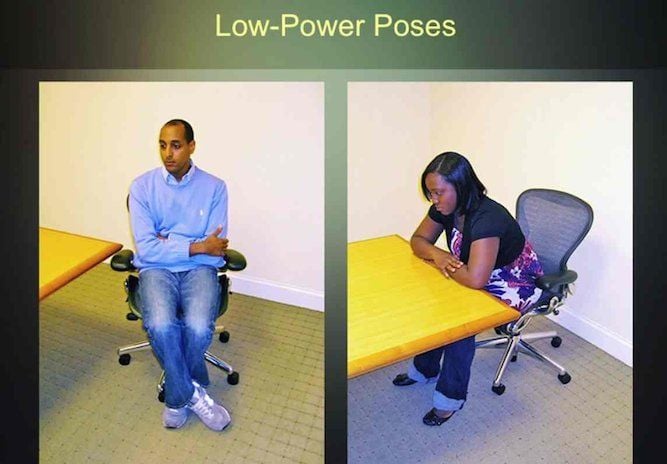
The researchers found that simply holding a high-power pose for as little as two minutes increases your testosterone levels, which are associated with confidence, and decreases your cortisol levels, which are associated with stress.
This is a no-tech lifehack that you can do while you sit or stand, while you’re alone or with others: Holding certain poses gives you more confidence and helps you to work better.
Stop slouching and strike a high-power pose. Lean back, put up your legs, and if you have space, make a V with your arms. You can do these while you sit or stand.
Don’t want to look weird with co-workers around you? Do this in a bathroom, or grab a meeting room and close the door.
In addition to striking high-power pose, you can focus on the position of your feet, smile more, align yourself better with your conversation partner, and lower your voice with deep breathing.
2. Tell yourself that you’re going to have a fresh start
Time it takes: 3-5 minutes
Have you ever wondered why everybody chooses January 1 to make commitments?
Yes, it’s a new year. But it’s also an arbitrary point in the lives of most people. January 1 may be a good date to set new commitments, but it’s not much better than July 28.
Here’s the thing: You can give yourself a fresh start anytime. By doing so, you’re going to have a burst of energy. That’s one of the findings from a study by the Wharton School of Business.
The researchers found that these “intertemporal markers” encourage us in two ways: by making people disconnect from past failures, and by promoting a big-picture view of life.
These factors make us more motivated to sequester away our failures and get things done.
So think of a recent event, be it a promotion, a breakup, some other special occasion, and contrive a fresh start. You’ll find it more believable than you think.
Try sitting yourself down to craft a message. Write it down and make it concrete. Here’s an example of a note that you can write, typed or by hand:
“Gosh, I complain of being busy all the time, but how much of it is spent wasted, unproductive? From now on, I’m going to make the most of the minutes every hour, and deliver my work with time to spare.”
Or, try this out:
“I’ve been putting this off for way too long; it’s long past time for me to start the business I’ve been dreaming about. I’ll start slow as a side project for now and see where it takes me. Today I’m going to make things happen.”
Believing it helps make it true.
3. Eat some chocolate – or some other dopamine-releasing reward
Time it takes: 1 minute
Here’s another low-tech hack to increase your level of motivation: Eat some chocolate. Not only is it delicious and easily available—the effects of chocolate on the brain are well-studied.
Here are some of the things that happen when you eat some:
- It increases both serotonin, a neurotransmitter that promotes calm, and also phenylethylamine, which promotes stimulation. White chocolate does both even more intensely.
- It triggers a release of dopamine, which will elevate your heart rate and significantly increase motivation.
- It also results in a mild antidepressant effect, literally because your brain responds to the stimulants by promoting blissful emotions.
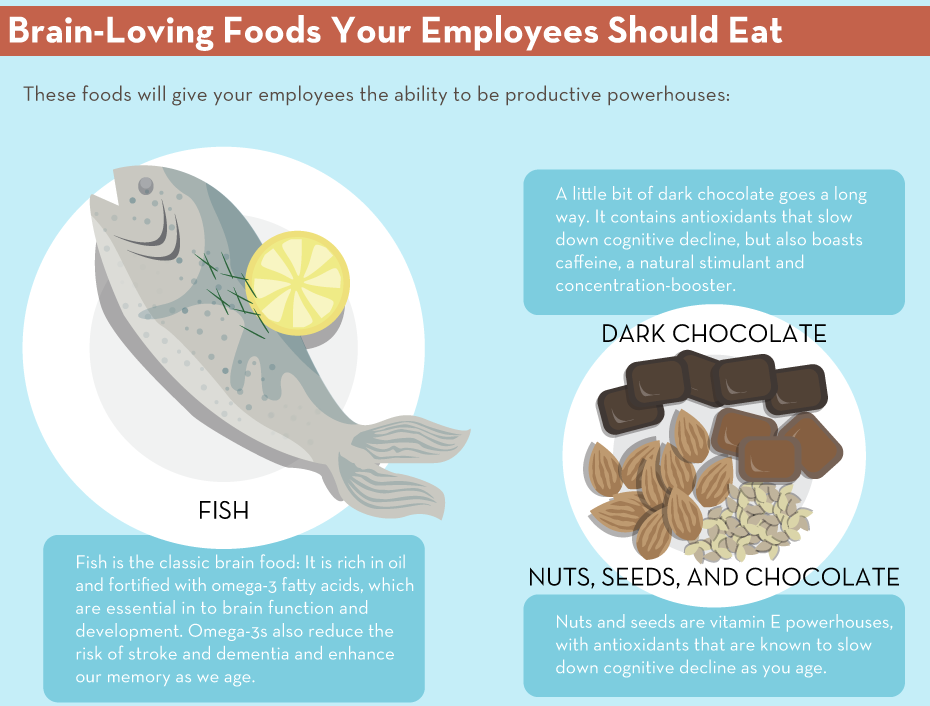
Other dopamine-inducing foods that can help maintain a healthy diet: blueberries, spirulina, and fish high in Omega-3 fats.
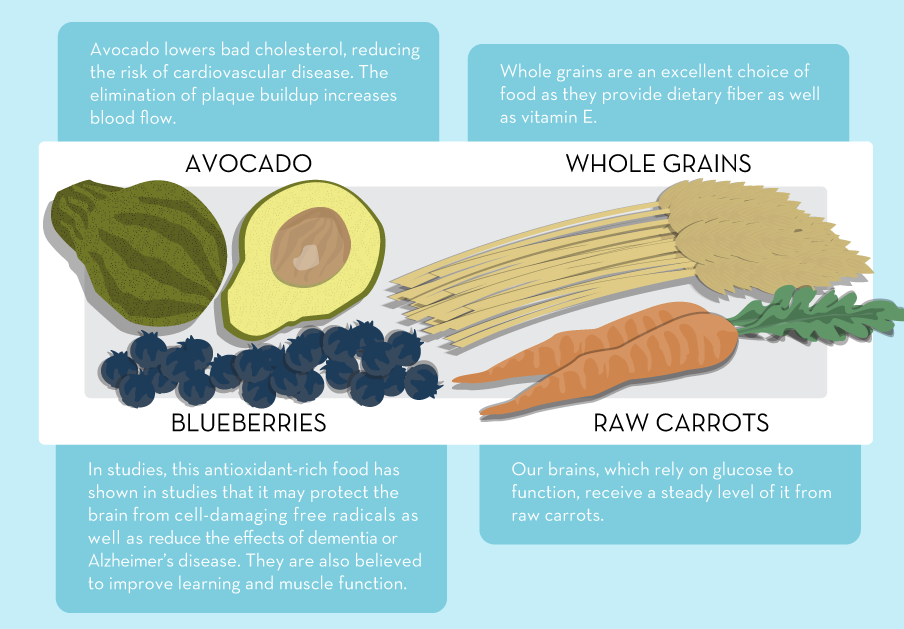
4. Write a contract – and donate the proceeds to charity if you lose
Time it takes: 3-5 minutes
Have you ever visited stickK.com?
It’s a platform for writing informal contracts that help achieve goals and form new habits. Put down a concrete goal, on say losing weight or on becoming an entrepreneur and starting a business, then ask a friend to monitor that you’ll get it done. Put up some money, say $50, and if you succeed, you get your money back; if you fail, then your friend donates the $50 to a charity of your choice.
StickK is an example of a commitment device, and it’s a remarkable mechanism for getting things done. Rather than a loose determination to make an abstract goal in the future, you have a concrete task to work towards on a specific date, and you lose more than your pride if you fail.
The founder of stickK is a professor of economics at Yale University who used a commitment device himself when he was a grad student. He promised to pay his friend $10,000 if he did not lose 38 lbs by a certain date. Fortunately he succeeded in shedding weight, not dollars.
Why do commitment devices work?
The logic of commitment devices is based on psychology and behavioral economics.
People tend towards hyperbolic discounting, which is a fancy way of saying that they overvalue the short run relative to the long-run. The examples are obvious: Do you sit and watch TV or go out for a run? Do you grab the fruit salad or the cheesecake for dessert?
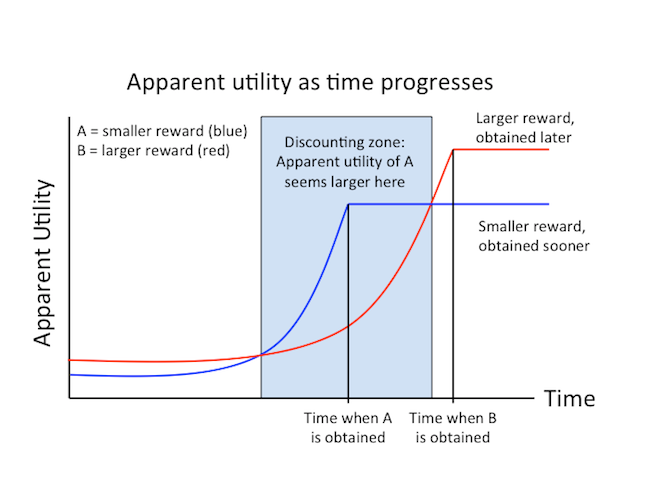
All of us know that what’s good right now isn’t necessarily good for the long run. Commitment devices try to change this up so that choosing what feels good in the short run gets more costly.
In addition, it requires that you set a concrete goal. Instead of saying that “I’ll lose weight this year,” you’ll have to say something like “I’ll lose 20 pounds by June.” Having something specific makes the task more concrete and more actionable.
And if you don’t make it to your goal after all, you can feel glad that at least a charity of your choice is going to get a donation.
5. See some green
Time it takes: 10 minutes
Certain colors make us think of certain things. Ever wonder why all sales signs are red, for example? It’s because people react faster and more forcefully when they see the color. People tend to associate the color red with a danger cue, and that attracts attention.
Guess which color provides the biggest boost in motivation and energy?
The color green.
Researchers have found in two studies that surrounding yourself with a bit of green provides a boost in motivation; and also that a glimpse of the color green sparks creativity.
The first study was published in 2012 in the Journal of Environmental Science & Technology via six researchers at the University of Essex.
They asked subjects to perform three cycling exercises while watching a video of a rural cycling course. The videos were randomly selected to have green, gray, or red filters.
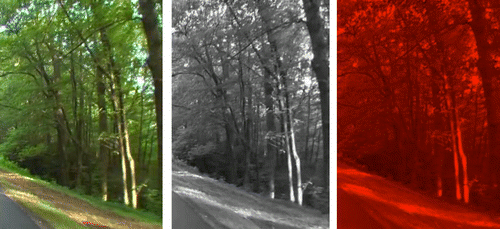
The green filter made the cyclists happier and less tired. Simply seeing lots of green made them more motivated.
The second study asked subjects to write as many uses for a tin can as they could think of in under two minutes, and graded them for creativity. Before each test they showed the subjects quick flashes of green, blue, white, and gray. The color that was most associated with encouraging creativity? Green.
A researcher hypothesized that seeing green makes people think of growth. It’s taken as a cue that we can improve task mastery and that we have room to grow.
How can you get more green in your life? Go outside! Take a stroll in a garden, or anywhere with shrubs and greenery. Is there a local park that people around you like to have lunch at? Are there lots of trees that you can walk around? Are there at least a few patches of grass by your workplace?

Go out and walk in these places. In addition to seeing more green; you’ll be a lot more motivated after a brief physical exertion and some fresh air.
Over to you!
Can motivation be hacked? These studies that draw from psychology and neuroscience suggest that there are at least a few things that you can do to boost your motivation right now, whether that’s putting yourself in a certain frame of mind or finding a quick, no-tech way to boost your body and mind.
So take a break at a natural point and try one of these five tricks to boost your energy. Your work will thank you for it.
Now, over to you – What tricks and tips have you discovered to increase your motivation or give yourself a big boost in energy? Have you discovered that any of the ones offered above work particularly well for you? I’d love to hear from you in the comments.
Try Buffer for free
140,000+ small businesses like yours use Buffer to build their brand on social media every month
Get started nowRelated Articles

TikTok's parent company must divest the app or face a ban in the U.S. Here's everything we know, plus how to plan ahead.

How the Buffer Customer Advocacy Team set up their book club, plus their key takeaways from their first read: Unreasonable Hospitality by Will Guidara.

In this article, the Buffer Content team shares exactly how and where we use AI in our work.
